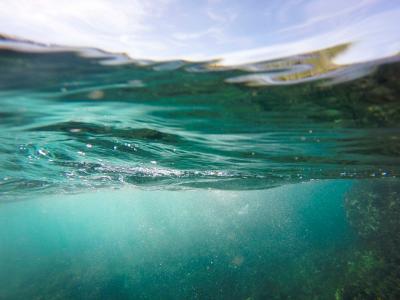
The European Union is pressing ahead with new ambitious strategies on emissions reduction but, asks Marie Cabbia Hubatova of the Environmental Defense Fund Europe, will the International Maritime Organization follow?
It’s been a busy few week for climate nerds watching the European Union. First, the European Parliament voted to include shipping in the EU’s Emission Trading System (ETS). Second, the European Commission proposed increasing the EU’s 2030 climate commitment to 55% reduction by 2030, compared to 1990 emissions, to remain on track to achieve carbon neutrality by 2050.
Commission President Ursula von der Leyen and her team are determined to keep the EU at the forefront of leading the world on ambitious emissions targets. She is setting an example for the rest of the world to follow the clear scientific message: we need to radically ramp up climate action if we are to mitigate against the most damaging impacts of climate change.
Everybody has an important role to play, including sectors that have been until now flying (or sailing!) under the radar in terms of climate action. It is time for the shipping industry to step up.
While the EU’s increased ambition was widely welcomed, some parts of the shipping industry heavily criticised the plans to include shipping in the EU ETS. The International Maritime Organization (IMO) Secretariat as well as the majority of IMO Member States do not seem to be in favour of the move.
But including shipping in the EU ETS is currently the only policy option being seriously discussed that could lead to the required reduction in emissions to achieve the new 55% target. And luckily, some parts of the industry are beginning to realise that and show appetite for helping design such policies. For the first time, progressive industry players recognise the importance of supporting both global and regional measures simultaneously.
At a time when industries need to be on the firm path to decarbonisation, shipping emissions, in fact, are increasing. The IMO’s Fourth GHG study showed the sector’s emissions grew by 9.6% between 2012 and 2018. Under a business as usual scenario, the IMO projects emissions to increase by 90-130% by 2050, compared to 2008 levels. That projection assumes that other sectors, such as land transport and aviation, reduce their emissions in line with the Paris Agreement goals, which will result in a significant drop in demand for fossil fuels and their sea-borne transport and related emissions.
We need to ensure that shipping will do its share to reduce its impact on global temperatures.
The world will have to reach net-zero by mid-century to be in line with the 1.5oC temperature goal of the Paris Agreement. To achieve that, all countries and sectors will have to play their role in the decarbonisation effort. That goal is, however, very different from the one decided by the IMO in 2018 – to at least halve the sector’s emissions by 2050.
Inclusion in the EU ETS would put shipping on a fast path to decarbonisation. It is not yet clear whether the ETS would include shipping emissions only within the EU or also journeys to and from the EU. Either way, it would have a positive impact on the sector’s emissions globally. We have seen attempts to include shipping in the EU ETS in the past, but this time it seems the chances for success are higher than ever before. The pressure on shipping to decarbonise is unprecedented and the EU is determined to show its leadership on this issue.
Moreover, the IMO needs more ambitious climate policy. Though the recent call from industry giant Trafigura for a carbon levy of between $250-300 per tonne of CO2 equivalent on shipping fuels is a step in the right direction, it is not yet become a formal proposal to the IMO. More industry players need to step up with these types of ambitious climate proposals if the industry hopes to transition successfully to a zero carbon future. Not doing so risks missing out on crucial technological and infrastructure investments needed to climate-proof its future.
It has often been the case in the past that EU action on shipping’s environmental impact has led to the IMO to follow suit. Let’s hope this is the case on carbon pricing as well.
###
The article was originally published by ship.energy